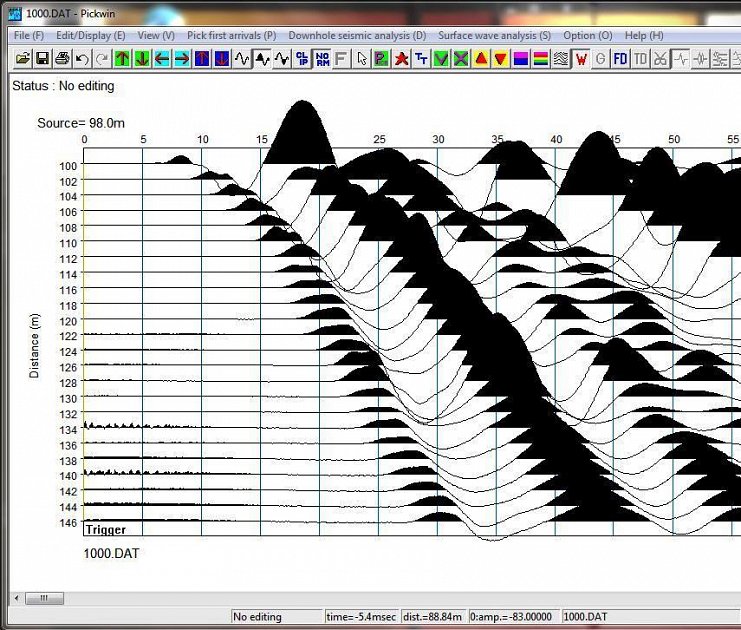

This coefficient expresses the amount of energy reflected at a sub-surface boundary. In effect, seismic reflection surveys produce 2D profiles or 3D imagery (cubes) expressing the seismic reflection coefficient. Depending on the objective of the survey, more information is incorporated in order to make decisions on further exploration activities. The product allows the explorer to better determine geological structures such as unit boundaries, faults and folds. The delivered product of a seismic reflection survey is a sub-surface profile image where the vertical axis is seismic wave travel time or, in cases of advanced processing, depth. Seismic reflection surveys provide explorers with structural images of the sub-surface.

As the geophone is lowered, an interval velocity profile is created. A special borehole-geophone is inserted into the borehole and a drop hammer is activated on the surface as a seismic source. The Down-Hole method is a quick and simple operation, in one day 2-4 wells of approximately 30-100 meters depth can be recorded (depending on the measurement interval). Seismic velocities are correlated to changes in rock/soil properties, such as hardness and density and applications include:ĭown-hole surveys applied together with Seismic Refraction and Site Effect surveys can create a high-resolution model covering large areas. Seismic down-hole surveys provide the client with a 1D high-resolution profile of seismic velocity variations at various depths of soil and rock in high-resolution.


 0 kommentar(er)
0 kommentar(er)
